|
|
Akimiski Island
- Canada Geese and Brant |
Page 2 |
|
 |
|
Akimiski Island is a major spring
migration stopover area for Atlantic Brant with an estimated
5,000-10,000 at various times (fide Ken Abraham). |
|
|
|
.jpg) |
|
A female Canada Goose of the subspecies Branta canadensis interior is on her nest
Incubating eggs. This long term study monitors
the reproduction, growth and survival of goslings. 29 May 2006. |
|
|
|
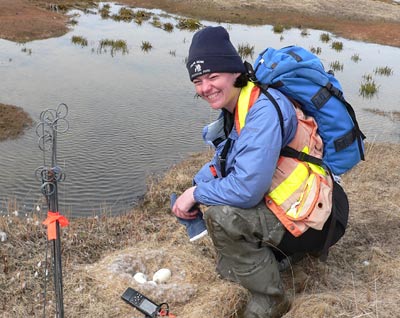 |
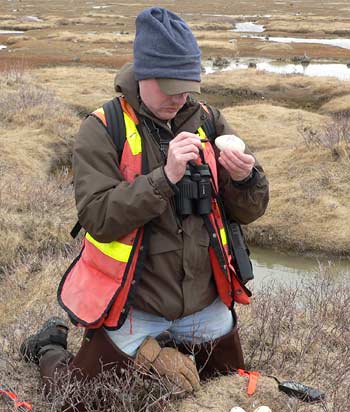 |
|
1. Sarah Hagey finds a
nest and records the GPS coordinates. |
2. Rod Brook numbers each egg in a nest. |
|
|
|
|
 |
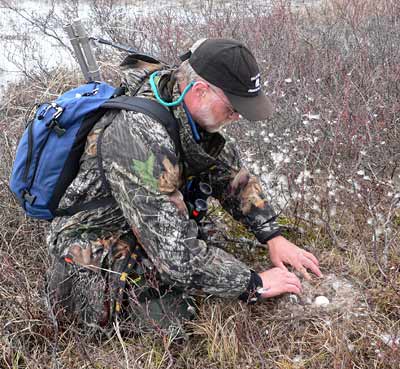 |
|
3. Ken Abraham
measures the eggs. 27 May 2006 |
4. Steve Belfry covers
the eggs and camouflages the nest. |
|
|
|
|
.jpg) |
.jpg) |
|
5. The goslings hatch from the numbered
eggs. 7 June 2006 |
6. Each gosling receives a unique number
that is tagged to the web on its foot. If this gosling is recaptured
at a later date, researchers will weigh it and take all its
measurements. Its growth can be measured because we know its hatch
date. |
|
|
|
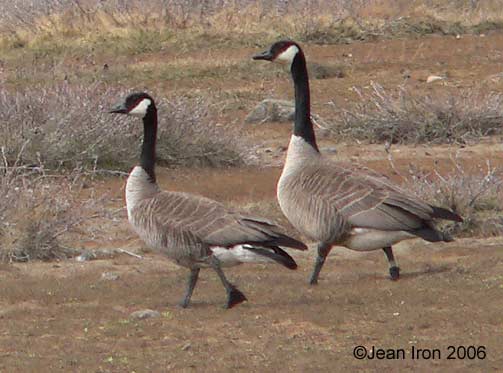 |
|
Females are smaller
than males but often appear much smaller because they fast during incubation
becoming quite
thin (fide Chris Sharp). 1 June 2006. |
|
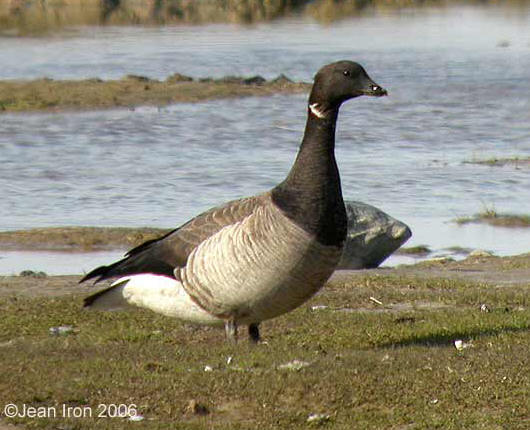 |
|
Most days we saw hundreds of Atlantic
Brant (subspecies Branta bernicla hrota), which had wintered on the
American East Coast. They remain on the Akimiski coast about three weeks feeding and fattening up before flying nonstop
farther north to nest on Southampton Island and other Canadian
Arctic islands. |
|
|
|
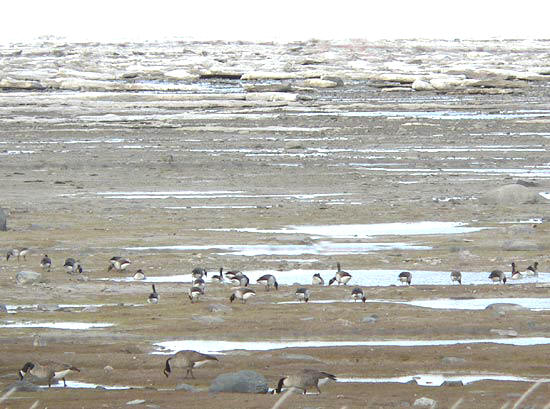 |
|
Brant and Canada Geese feed on
Puccinellia, a native grass growing along the coast. The pack
ice was still along shore on 26 May. |
|
|
|
|